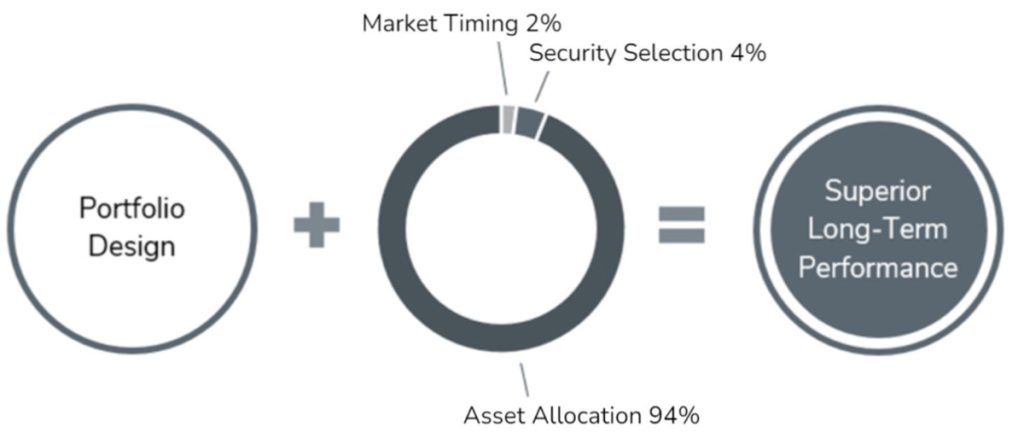Asset Allocation
The Role of Asset Allocation
Risk Management
Managing investment risk with clear policies and procedures
Long-Term Discipline
Meeting regulatory and compliance obligations
Our Approach
Asset allocation serves as a cornerstone of successful investment management, encompassing the strategic process of dividing a portfolio among various asset classes like stocks, bonds, cash, and alternative investments. The primary objective of asset allocation is to construct a well-balanced portfolio that aligns with your unique financial goals, risk tolerance, and time horizon.
When it comes to portfolio performance, asset allocation plays a pivotal role. Research indicates that asset allocation accounts for approximately 94% of portfolio returns*, surpassing the impact of market timing and security selection in the long run.

*Brinson et. al, Determinants of Portfolio Performance (1986, 1991)
Strategic Asset Allocation
Strategic asset allocation forms the bedrock of our portfolio construction process. We employ the power of Mean-Variance Optimization (MVO) to systematically determine the optimal mix of asset classes that aligns with your long-term investment goals and risk tolerance.
Using MVO, we apply mathematical models that consider the expected returns, standard deviations, and correlations of asset classes to determine the optimal allocation. MVO helps us find the mix of asset classes that provides the highest expected return for a given level of risk or the lowest risk for a target level of return. It allows us to strike the optimal balance between risk and return in constructing your portfolio, providing a solid foundation for long-term success.
Tactical Asset Allocation
Asset Class Selection
We take a comprehensive approach to portfolio construction, carefully selecting a range of asset classes based on their historical risk and return characteristics. Each asset class plays a distinct role in your portfolio, offering potential growth, income generation, capital preservation, or diversification benefits.
Our goal is to construct portfolios that align with your financial goals and risk tolerance. By analyzing various asset classes, we create a diversified mix that optimizes the risk-return trade-off and enhances the potential for long-term success.
Alternative Investments
Rebalancing Strategies
Once the initial strategic asset allocation is established, we continuously monitor and periodically rebalance the portfolio. Market fluctuations and changes in asset class performance can cause deviations from the target allocation. Rebalancing involves adjusting the portfolio back to the original strategic asset allocation to maintain the desired risk and return characteristics over time.
Our Investment Approach
Further Resources
- Wealth Planning
- Market Insights
- Market Insights
